Consequences of global temperature rise
Predicting the consequences of global warming is one of the most difficult tasks for the world’s climate researchers. The natural processes that cause rain, hail and snow storms, increases in sea level and other expected effects of global warming are dependent on many different factors. It is also difficult to predict the size of the emissions of greenhouse gases in the coming decades as this can be influenced by political decisions and technological advancements.
Many of the effects of global warming have been well documented and observations from real life are consistent with predictions.
What will be affected by temperature rise?
Different crops demand different conditions to grow. Even within a country like Britain, crops such as apples grow better in some places than in others. This regional variation is often down to different local conditions, including climate. If temperatures rise, some crops may become harder to cultivate and may have to be replaced with ones more suited to the new environment.
In the future, a warmer climate may cause more heatwaves, increase rainfall and increase the frequency and strength of storms. Over the past 35 years, there has been an almost fivefold increase in the recorded number of disasters caused by natural hazards, although not all were influenced by extreme weather events (source: III.ORG).
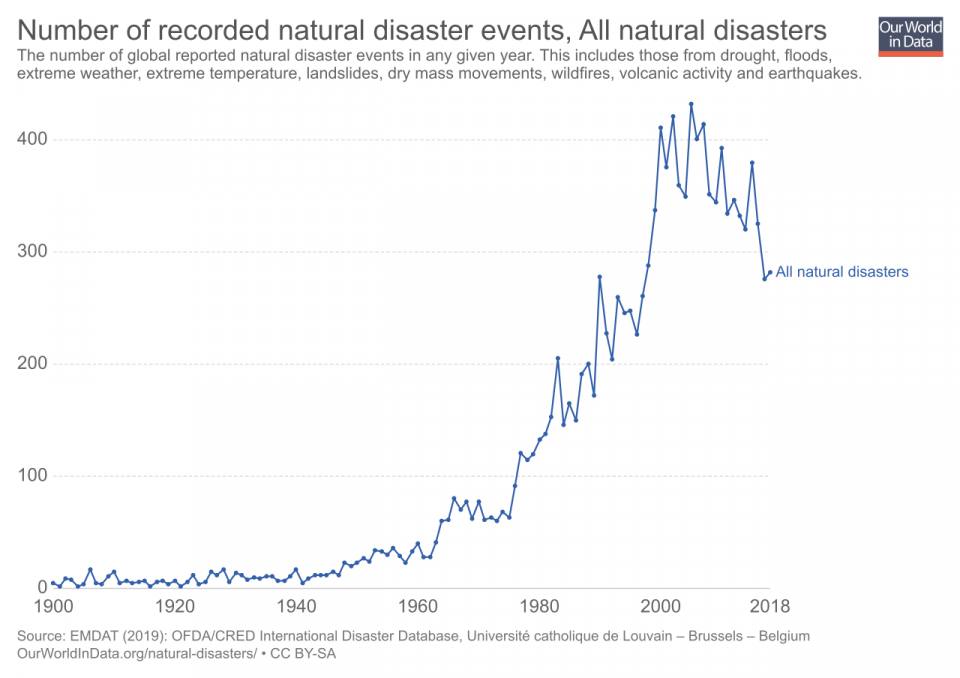
As the Earth warms up, interactions between the oceans and atmosphere can amplify the frequency and intensity of weather events. These include hurricanes, floods and droughts. Extra water vapour in the atmosphere falls again as extra rain, which can cause flooding. During hot weather, evaporation from both land and sea increases and can cause droughts in regions where there is low precipitation.
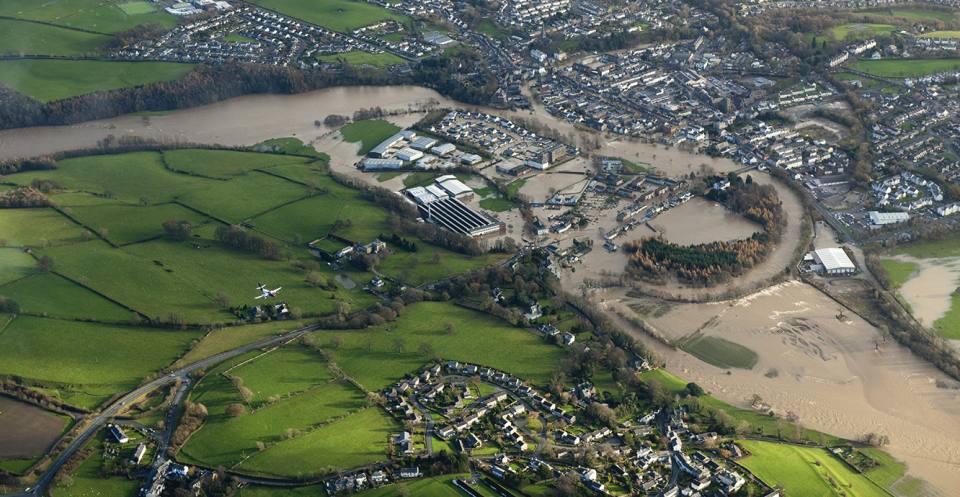
Worldwide, glaciers are shrinking rapidly and ice appears to be melting faster than previously estimated. In areas dependent on meltwater from mountains, changes in water flow and availability can lead to a lack of water and even drought.
According to the Intergovernmental Panel on Climate Change (IPCC), up to a sixth of the world’s population lives in areas that will be affected by meltwater reduction. In some regions of the world, this will result in crop failure and famine, especially in areas where temperatures are already high.
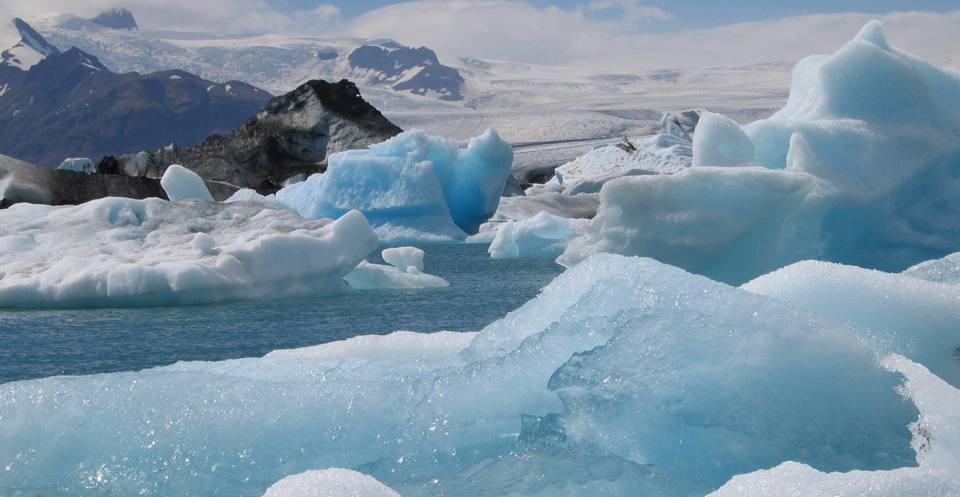
Increased levels of ice and snow melt cause sea levels to rise, as does thermal expansion (water expands when warmed). Areas that lie just above sea level now, may one day become submerged. For example, some Pacific Island nations are expected to be partially or completely submerged by the end of the 21st century.
A rise in sea levels will also have an impact on coastal and shallow marine plants and animals will be affected, for example mangroves and coral reefs. In countries with large areas of coastal lowland, there will be a dual risk of river floods and coastal flooding, which will reduce the area for living and working. Coastal defences will need strengthening and river levées will require developing.
An increase in standing water may potentially increase populations of insects like mosquitoes, and therefore malaria, and other diseases that are associated with standing water, such as Lyme’s disease.
Wildlife will respond to climatic changes in different ways. Certain species might be able to adapt or migrate to habitats with more suitable conditions. Where species are unable to adapt and conditions become inhospitable, populations are likely to become threatened and, in extreme cases, species may face extinction.
In 2019, a UN report suggested that around one million animal and plant species would be threatened with extinction, many within decades, and more than ever before in human history.
Past climates
How do we know about the different climates that Britain has experienced in the past? Geologists find evidence in all sorts of places.
Types of evidence
The characteristics of different rocks depend on the environment in which the sediments that form them were deposited.
- Some sands and gravels are deposited by retreating glaciers and they become a distinctive sediment called ‘till’. Where till is found, we know that there must once have been glaciers and therefore a cold climate.
- Rocks that form in a hot desert environment are often coloured red by iron deposits.
- In regions with high temperatures, water can evaporate quickly leaving behind a layer of salt on the ground that becomes preserved in the rocks and is another indicator of a hot climate.
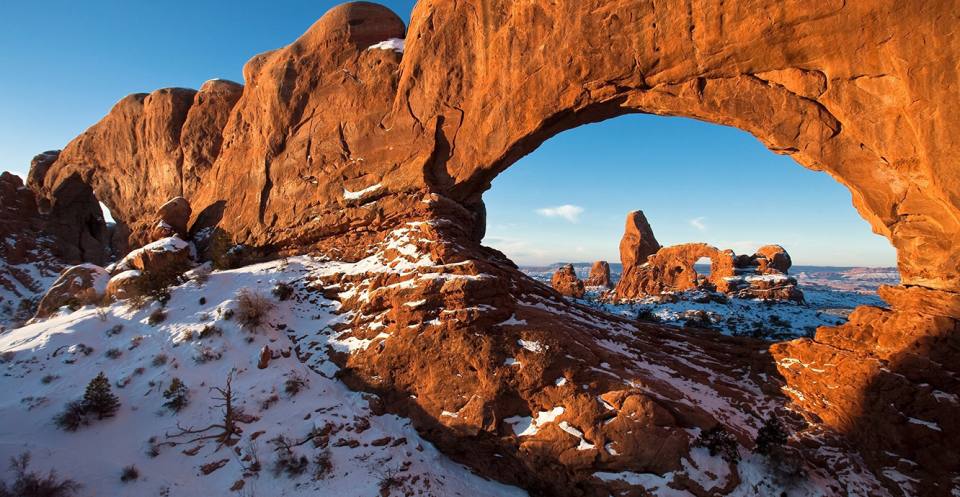
Different species of plants and animals need different conditions to survive. Some can be very sensitive and do not adapt easily to change. For example, coral reefs live in tropical waters within a particular temperature range, specific depths and require certain light levels. If the water conditions change, even by a relatively small amount, they cannot survive. Therefore, wherever fossil corals are found, it is possible to estimate the environment in which they lived in the past because of these specific environmental requirements.
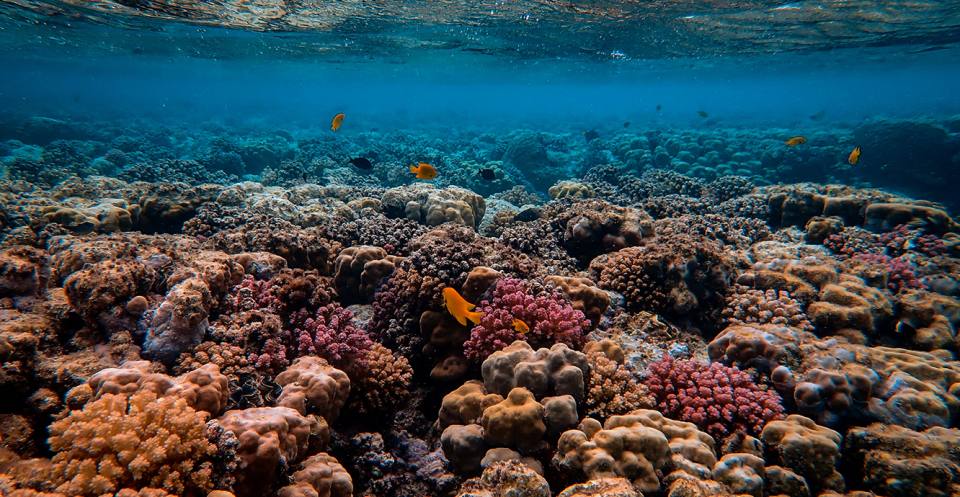
Pollen and spores
Plants produce pollen and spores that are particularly useful in helping to determine climate.
Pollen and spores are produced in their millions. They have a strong outer case, so they are easily preserved as fossils if they are quickly covered in mud. Each plant has different shaped pollen or spores so it is possible to identify the type of plant it came from under a microscope.
Different plant species require different climatic conditions, therefore looking at the pollen in a layer of rock can be a good indication of the climate at the time when they were living.
Microfossils
Microfossils are tiny fossils, usually smaller than 4 mm in size. They can be the remains of minuscule life forms or microscopic parts of plants and animals. Like other plants and animals, they may require specific living conditions, but they are more abundant and are found in many types of sedimentary rocks. Because of this they can be a useful indicator of how climate has changed over a period of time.
Today’s landscape gives clues to the climate of the past. For example, glaciers leave tell-tale signs of their activity. As glaciers move slowly down river valleys, they can carve out deep, U-shaped valleys such as the Norwegian fjords. Glaciers also pick up pieces of rock and gravel and, as they move forwards, this debris scratches grooves called ‘striations’ into the rocks on the valley floor.
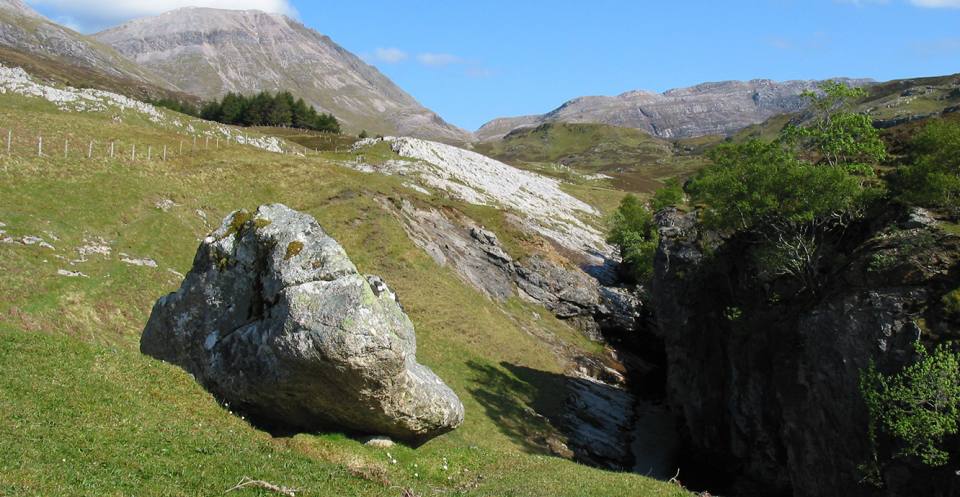
When the ice melts, the very large pieces of rock they have been carrying are dumped, often many miles from where they were picked up. These abandoned boulders are called ‘erratics’.
All of these kinds of erosion and deposition clearly tell of temperatures much colder than our current climate.
There is more than one type of oxygen and these different types are called isotopes. Some of these isotopes are ‘heavier’ than others and this mass is determined by the number of neutrons the isotopes contain. Oxygen-16 (containing eight protons and eight neutrons in each atomic nucleus) is lighter than oxygen-18 (eight protons and ten neutrons). These isotopes can also be written as 16O and 18O.
Antarctic ice cores hold the secrets of our past climate. A European project revealed a climate record for the last 800 000 years. It showed that the Earth experienced eight glacial cycles — each with a warm period and an ice age. Source: British Antarctic Survey.
In water, the relative amount of each of type of oxygen isotope varies with the temperature. Rain and ice contain water high in 16O so when there is lots of ice, the ocean water is left with a lot of 18O.
Shells and sediments carry the isotopic signature of the water in which they were formed so, by analysing the ratio of 16O to 18O recorded in rocks, fossils, ice and sediments, we can find evidence of the climate at the time they were formed.
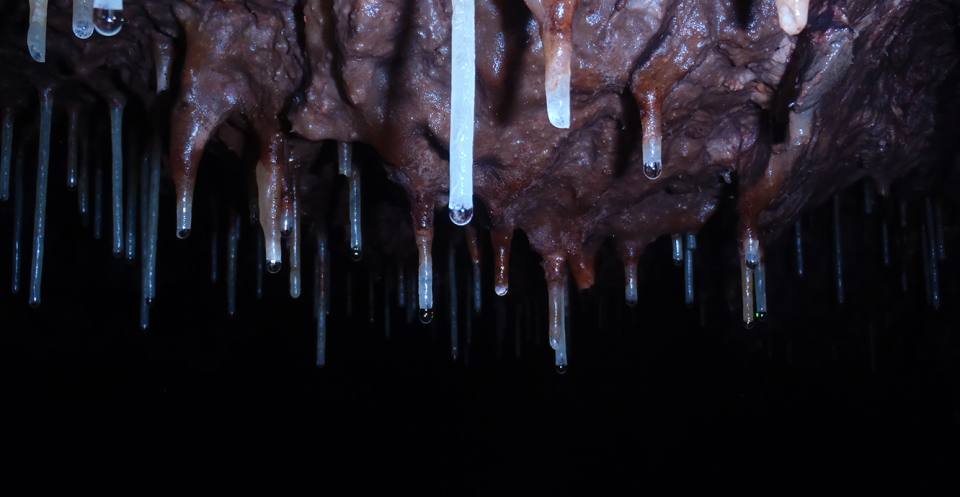
Greenhouse Earth evidence
Naturally induced global warming has occurred in the past. The Earth has a natural mechanism for dealing with this problem, but it is one that humankind cannot rely on to solve the current crisis.
Towards the end of the Cretaceous Period (100 to 66 million years ago), the Earth experienced extreme levels of marine volcanic activity. Huge amounts of lava erupted at the fractured boundaries of the tectonic plates running beneath the Pacific and Atlantic oceans. Elsewhere, unusually large accumulations of molten basalt had erupted through these plates, forming large areas of thickened oceanic crust known as ocean plateaux. Volcanic gases released by these eruptions were rich in carbon dioxide (CO2) and sulphur dioxide (SO2) and, although some CO2 was absorbed by the oceans, much found its way into the atmosphere.
Analysis of fossil soil horizons and fossil plant remains suggests that late Cretaceous atmospheric CO2 levels peaked at between four and eighteen times current levels.
SO2 dissolves in water forming a strong acid (sulphuric acid) and this may have corroded oceanic deposits of limestone, releasing more CO2.
One of the warmest periods in the Earth’s history was the Cretaceous, from 145 to 66 million years ago. The Earth was then several degrees warmer than today and is described as having a ‘greenhouse’ climate. Britain enjoyed warm, tropical conditions at this time. The poles were warm and at times there may have been no ice on them at all. There is even evidence of temperate forests growing in the Arctic and Antarctic. As ‘greenhouse’ temperatures were reached, the world’s ice melted, which caused significant sea level rise.
During the late Cretaceous, the high levels of atmospheric CO2 heated up the Earth in the same way as they are doing today. Even high latitudes were affected, with land areas becoming covered by lush, subpolar forests. Ice was largely absent from our planet. At this time, thick deposits of chalk were accumulating in warm seas across southern England. This rock, which now forms the famous white cliffs of the Sussex and Kent coast, contains microscopic fossils that preserve a chemical signal of the sea temperature in the late Cretaceous.
This evidence shows that the seas and oceans were becoming progressively warmer, with sea-surface temperatures around Britain probably reaching 28°C. Even deep ocean water seems to have been warm, perhaps as high as 15°C, compared with the near-freezing deep ocean water of today.
A critical point was reached about 93 million years ago, at a time called the Cenomanian/Turonian boundary by geologists. In all the deep oceans of the world, and some of the shallow seas, there was a sudden appearance of dark mudstones containing high levels of organic carbon.
Normally, when an organism dies, its organic matter decays as other life forms consume its nutrients and carbon. When oxygen is largely absent in this process, substantial amounts of concentrated organic matter becomes preserved. This may occur in isolated lakes and seas that are cut off from fresh supplies of oxygenated water
At the Cenomanian/Turonian boundary, all the deep oceans and some shallow seas appear to have become temporarily oxygen starved. This event is known as an ‘oceanic anoxic event’ and the organic-rich muds that formed are called ‘black shales’. The seas covering southern England were too shallow and aerated to form black shales at this time, but they did form in the deeper water covering Lincolnshire and Yorkshire, where a dark mudstone known as the ‘Black Band’ represents this event.
Oxygen starvation of the oceans on a global scale seems an improbable event, but in 2007, an area of the Pacific Ocean off the north-west coast of the USA experienced just such a fate. In this case, the decomposing remains of an unusually rich bloom of plankton consumed the oxygen in the water. Fish, crabs and marine worms all perished in a brief period of anoxia.
In the late Cretaceous, the oxygen starvation lasted much longer, perhaps between 400 000 and 800 000 years, although occasional pale-coloured beds in black shale horizons suggest brief periods of better oxygenation. The cause of the late Cretaceous oceanic anoxic event is still uncertain, but it seems to be related to a rise in global sea levels. This may have triggered an explosion of life in near-surface waters and/or funneled poorly oxygenated saline currents from newly created shallow seas into deep ocean basins. Certainly the high temperatures of both surface and deep ocean waters suggest a limited holding capacity for dissolved oxygen compared to modern oceans.
There is a balance between the gases in the atmosphere and the gases dissolved in the oceans. CO2 consumed in the ocean by photosynthesising plankton (phytoplankton) is quickly returned to the ocean when they decay or when they are consumed as part of the food chain. In this way the ocean/atmosphere balance is maintained.
However, in an oxygen-starved ocean, organic matter is not recycled and instead accumulates to form black shales. The ocean becomes depleted in CO2 and is no longer in balance with the atmosphere. Theoretically, this balance could be restored by more atmospheric CO2 being drawn down into the oceans. It is thought that oxygen starvation of the oceans in the late Cretaceous allowed the oceans to lower CO2 in the atmosphere and initiate global climatic cooling.
Whilst the cause of oceanic anoxic events might still be unresolved, there is growing evidence that they represent Earth’s natural response to ending extreme greenhouse climates. Study of the chalk cliffs of southern England shows a progressive warming trend, evidenced in microscopic fossils. The deposition of black shales in the deep oceans also show a long term cooling trend afterwards. This suggests falling atmospheric CO2 levels.
The locking away of organic matter in black shales prevented it from being recycled to the oceans to sustain new life. As the dissolved CO2 in the oceans became used up, more was absorbed from the atmosphere. Since fresh volcanic supplies of CO2 had now dwindled, the effect was long-term cooling down of our planet for the remainder of the Cretaceous.
The continued study of ancient greenhouse climates offers us one of the best means of predicting what the future effects of modern global warming might be.
Ice age climate evidence
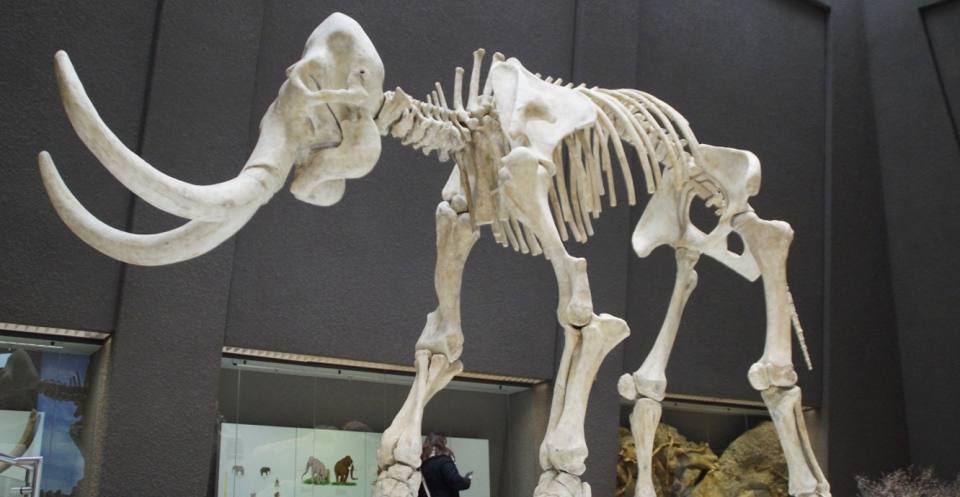
During the warm periods, lions, hippo and rhino lived in Britain, but when the tundra developed, mammoth, bison, wolves and giant elk lived here. The last glaciation in Britain ended about 10 000 years ago. Source: Creative Commons
The Quaternary Period, the past 2.6 million years, has seen great changes in the climate that caused ice sheets to advance from the poles into usually temperate places on the globe. Evidence shows that, although there has been a progressive long-term trend of global cooling during the Quaternary, there have also been several different ice ages, or glaciations, separated by episodes of global warming where the climate was much warmer or more temperate than the present day.
Ice has advanced and retreated repeatedly, beginning at the start of the Quaternary and continuing to the present day. Ice covered much of Britain for long periods, while at other times, like the present, Britain has been ice-free.
These repeated glacial episodes have resulted in significant fluctuations in sea level and caused plants and animals to migrate to more comfortable climates. Some animals that could not adapt or migrate became extinct. At the end of the Pleistocene (the earlier part of the Quaternary, from 2 600 000 to 12 000 years ago) there was a major extinction of large mammals, including the woolly mammoth.
Sea level and coastal changes
Sea level change
News stories often link climate change to rising sea levels. Throughout Earth’s history sea level has constantly changed and, indeed, it is these very changes that generate most of the geological record. Geology has left us many clues to how the environment has changed over time and whether the sea was higher or lower than it is today. Maybe the place where you live was once below sea level.
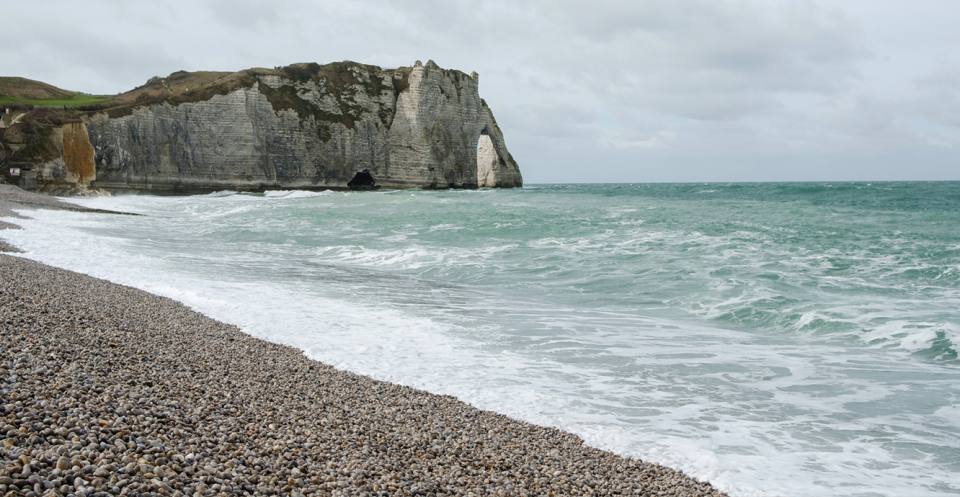
Sea level has constantly changed throughout Earth’s history. Source: © Canva.
Sea level, or ‘mean sea level’ as it is sometimes known, is the average height of the ocean’s surface between high and low tide. Changes in tides and wave conditions over time are averaged out to determine a ‘still water level’ that can be used to identify whether the sea level has changed and the height of the land above sea level.
Because the surface of the land also moves up and down over long periods of time, sea level changes may be described as ‘relative’ or ‘absolute’. Relative changes may be observed even though the absolute height of the oceans remains the same.
It is important to realise that, when earth scientists talk about a rise in mean global sea level (what we call ‘eustatic’ sea level), local changes may be quite different. This is why local studies of sea-level rise and fall are so important.
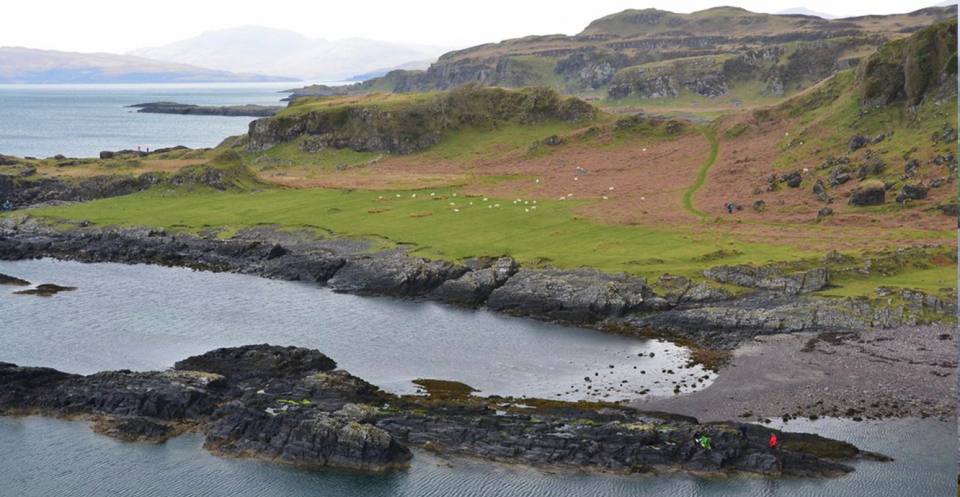
During the last ice age, lots of sea water was stored in ice sheets and glaciers and on average, sea level was more than 130 m lower than it is today. Sea level changes related to the growth and melting of ice sheets happen relatively quickly, taking tens of thousands to hundreds of thousands of years, but sea levels also rise and fall slowly over millions of years. These gradual changes have generated the thick sequences of sedimentary rocks that record the long history of geological time. We would have very little, if any, of our sedimentary rocks were it not for the fact that sea levels rise and fall.
Sea levels change for many reasons and over different timescales. Sea levels are rising today not only because significant parts of the land-based ice is melting, but because ocean waters are warming and expanding.
Note that there is no direct effect on sea level when sea-based ice melts, because sea ice is already part of the ocean system. Ice floats because it is less dense than water and, because it displaces an equivalent mass of water, there is no increase in sea level as it melts — in just the same way a cold drink does not overflow the glass as the ice cubes it contains melt. There is, however, a significant indirect effect of Arctic ice melting.
‘Albedo’ is the ability of a surface to reflect sunlight and ice and snow are very good at reflecting the warming rays of the sun. As the Arctic ice melts, polar regions will warm even more quickly because the Arctic ocean will now absorb the incoming energy. Thus, warming leads to Arctic ice melting, which leads to more warming. This is a classic positive feedback in the climate.
Is there evidence for recent sea level change?
Coastlines are very distinctive and diverse environments. We find them in all sorts of places, including ones that are no longer at the coast!
During the Quaternary glaciations, the weight of ice over Scotland caused isostatic depression of the land surface. Sea levels lowered as water became locked up in the major continental ice sheets. When the ice melted, in late glacial and postglacial times, these processes were reversed, but isostatic recovery of the land initially lagged behind the eustatic rise in sea level, with the result that beaches and features of marine erosion were formed well above the present sea level.
As isostatic recovery continued (and relative sea level fell), these features were uplifted to become raised beaches and wave-cut platforms. The amount of isostatic recovery was greatest over those areas where the ice had been thickest, with the result that initially horizontal raised marine features have been tilted.
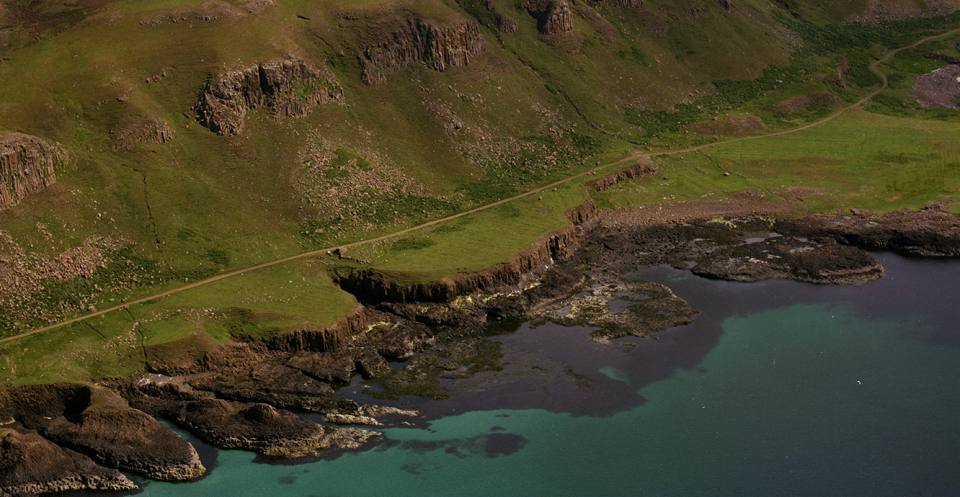
Raised beach in Canna, north-west Scotland. BGS © UKRI.
Coasts are sometimes characterised by wetlands; great expanses of swamps and marshes occupied by a particular ecosystem that is suited to the brackish conditions. These environments can be preserved by being buried under sand and beach deposits as sea level either rises or as the coastal region sinks. Later in time, we might find evidence of these former environments (or palaeoenvironments) through rock cores or in the faces of quarries.
Their presence tells us of an older sea level and ,if we can measure their ages (for example, through radiocarbon dating techniques), we can build up a history of sea level changes.
About 50 million years ago, in southern England and the Isle of Wight, mangroves grew in the wet areas and, in the drier areas, the plants included pines, laurel, raspberry and magnolia. Laurel is widespread today, in tropical, subtropical and Mediterranean regions.
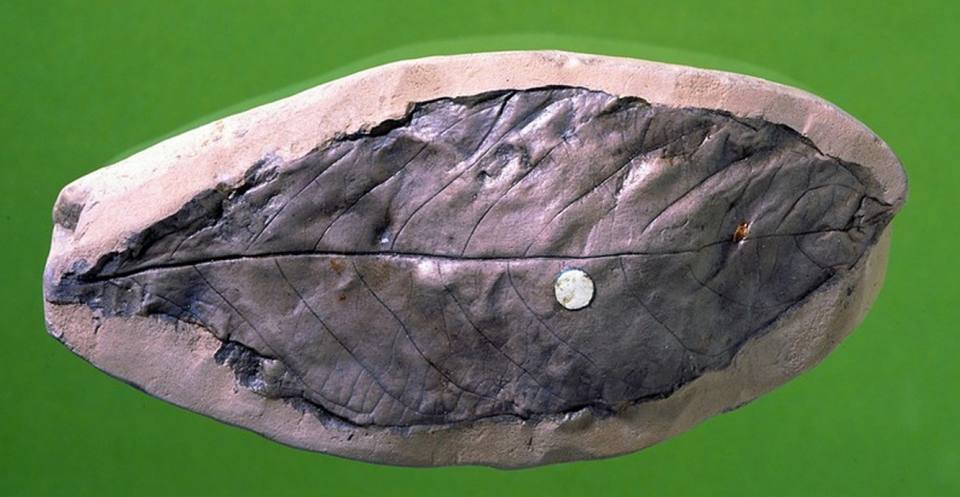
Marine terraces and buried wetlands are only two of many types of geological evidence for earlier sea levels. Geologists also study foraminifera and diatoms for evidence of ice ages and sea level change. These fossils can be used as indicators of past climates, as different species prefer living in different water temperatures.
Many marine organisms, including foraminifera, have hard shells made of calcium carbonate. The composition of oxygen isotopes found in the carbonate shell can be measured to determine what the water temperature was like when the organism was formed. High proportions of the 18O isotope in the shell are associated with cold seas and glaciation, because relatively more of the lighter isotope, 16O, is removed from ocean waters by the process of evaporation and subsequently locked up in snow and ice during cold periods.
Diatoms are single-celled algae encased in silica and live in almost any freshwater or marine environment.
Foraminifera and diatoms are useful in the reconstruction of past sea levels because, in coastal environments, their presence is controlled by the tides. Both are also found in high numbers and preserve well in the fossil record. If their relationship with the varying tides can be worked out, past sea level can be reconstructed from their abundance in sediment cores. Many of these species reside in salt marshes, where there is ample organic material available for radiometric dating. These dates can be used to cross-check rates of sea-level change in the past.
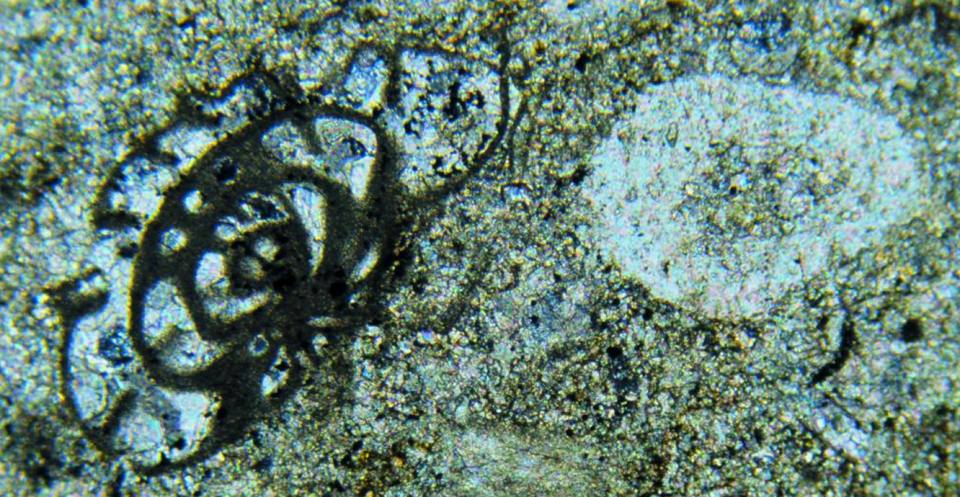
Case study of sea level change
The Somerset Levels are an extensive, low-lying area of drained ‘wetland’ bordering the Severn Estuary. The geology consists of layers of sands, gravel, clay, silts and peats that would have been deposited in the last 9000 years (Holocene age). These deposits indicate a change in the environment from marine to freshwater conditions. This is evidence of a changing but gradual rise in sea levels during the last 9000 years.


Somerset Levels and Moors: sea-level change from 9000BP to present day. BGS © UKRI.
You may also be interested in

Discovering Geology
Discovering Geology introduces a range of geoscience topics to school-age students and learners of all ages.
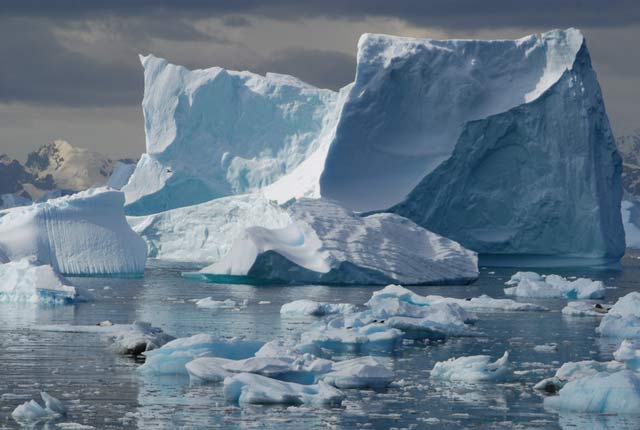
Discovering Geology: climate change
What is the difference between weather and climate? what causes the Earth’s climate to change and what are the impacts? Find out more with our Discovery Geology climate change resources.
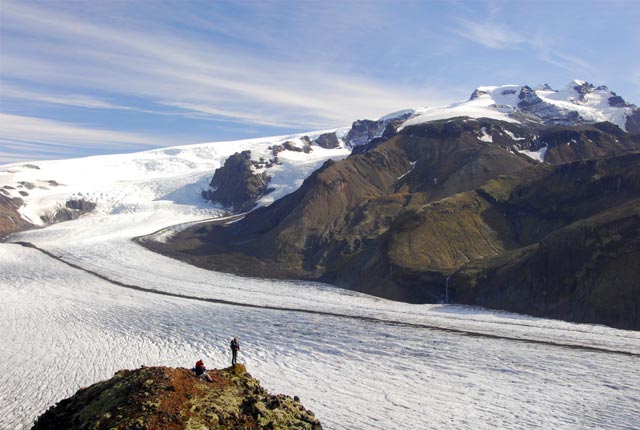
What causes the Earth’s climate to change?
Geological records demonstrate that there have been a number of large variations in Earth’s climate in the past.
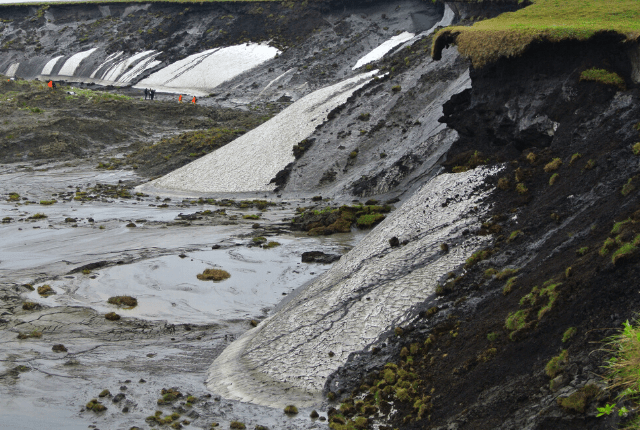
The carbon story
The carbon cycle describes the process in which carbon atoms continually travel from the atmosphere into the Earth, then released back into the atmosphere.
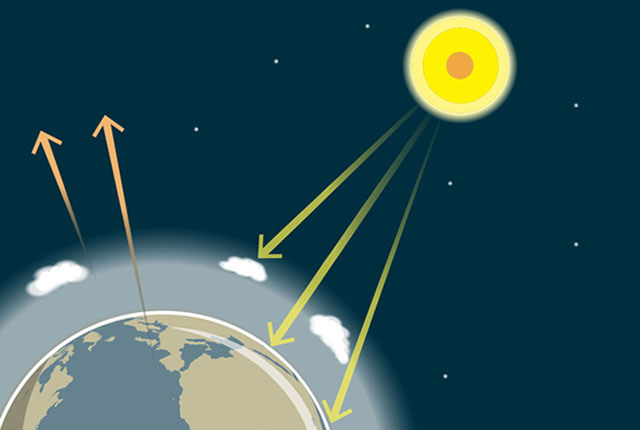
The greenhouse effect
Gases in the Earth’s atmosphere act as an insulating blanket around the planet, trapping more of the Sun’s heat.
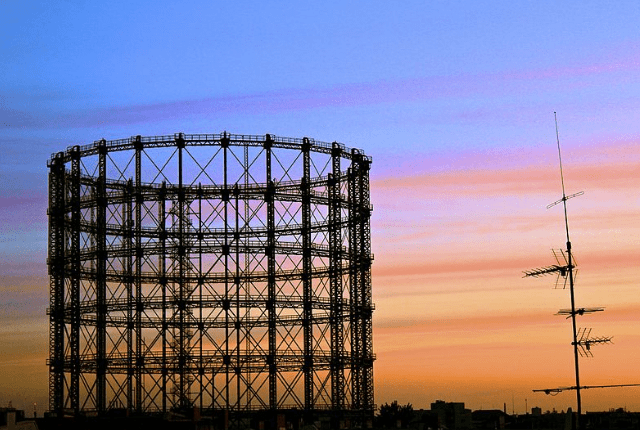
Understanding carbon capture and storage
Carbon capture and storage involves capturing carbon dioxide at emission sources, such as power stations, then transporting and storing it underground.
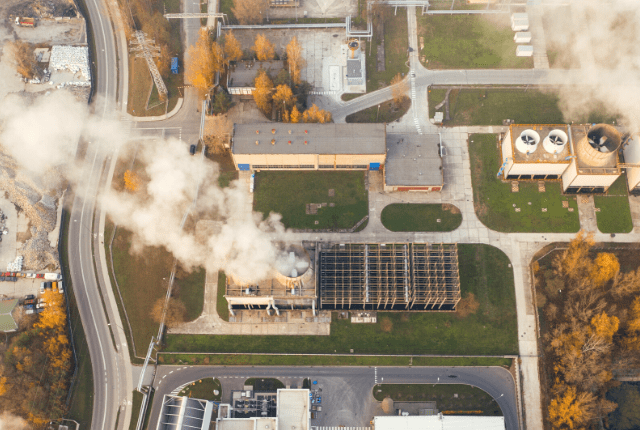
What are we doing about climate change?
BGS is committed to research aimed at slowing down the effects of a changing climate, whilst helping society to become resilient to climate change.
Footnotes
1. III.ORG
III.ORG. World Weather-Related Natural Catastrophes By Peril, 1980-2018. [Graphs]. Insurance Information Institute (Source Munich Re). [cited 29 November ].Available at https://www.iii.org/fact-statistic/facts-statistics-global-catastrophes
2. IPCC
IPCC, 2019: Summary for Policymakers. In: IPCC Special Report on the Ocean and Cryosphere in a Changing Climate [H.-O. Pörtner, D.C. Roberts, V. Masson-Delmotte, P. Zhai, M. Tignor, E. Poloczanska, K. Mintenbeck, A. Alegría, M. Nicolai, A. Okem, J. Petzold, B. Rama, N.M. Weyer (eds.)]. In press



